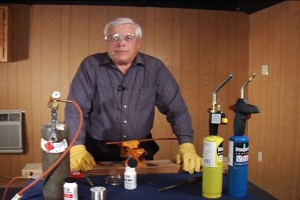New federal legislation enacted earlier this year lowered the acceptable levels of lead that can be found in mechanical components used for potable water applications. The Reduction of Lead in Drinking Water Act (RLDWA) was designed to keep the general public safer by reducing exposure to lead that can potentially contaminate water and is typically leached from pipes, faucets, and other components and fittings.
The Act not only affects the consumer, but also the manufacturers, retailers, plumbers, mechanical contractors, and technicians who make, sell, and install these components and fittings for use in homes, schools, hospitals, offices, and commercial buildings throughout the United States.
Copper tube and fittings have always been lead-free; however, many copper alloys like some brasses and bronzes have included small amounts of lead in their composition to provide beneficial machining properties, allowing the production of complex parts. Across the industry, copper-based alloys like brass and bronze are the most commonly used materials for valves, backflow preventers, faucets, and other components. The significant reduction in allowable lead content — from 8 percent of the total volume of the component, to a weighted average of 0.25 percent of the total surface area of the component in contact with the water (wetted surface area) — affects the chemical composition of copper alloys that can be used for potable water applications, as well as the design of components made from these alloys.

|
| The Copper Development Association (CDA) has developed a new video that demonstrates how to properly solder copper tube and fittings to the newer, no-lead, brass and bronze copper alloys. (Photo courtesy of Copper Development Association) |
Concerns related to the cleaning methods, types of fluxes, size of the torch tips, and solderability between copper tube and these new no-lead copper alloys began to surface as manufacturers began to comply with the RLDWA. To address these concerns, the Copper Development Association (CDA) conducted laboratory research and testing out in the field. The CDA found that, in many cases, those working with the new no-lead copper alloys — which use bismuth, silicon, sulfur, selenium, or other elements in place of lead — were using the incorrect soldering procedure, particularly when it came to the heating techniques used while making a joint.
“Perfectly good joints can be made using no-lead, brass and bronze copper alloys as long as the joint is heated correctly,” said Andy Kireta Jr., vice president of CDA.
CDA discovered that the most common mistakes when making a soldered joint with the new alloys occurred during both preheating and the actual heating process. Because some of the newer alloys have different thermal conductivity properties than the older ones, the proper amount of heat and the location where it is applied play a pivotal role.
“During preheating, we found that many installers began heating the joint by applying the torch directly to the fitting or component cup, ignoring the tube while attempting to bring the entire joint assembly up to soldering temperature,” said Kireta. “During the soldering process, once the joint is at soldering temperature, installers tend to focus all of the heat at one point at the base of the fitting or component cup while applying solder at either one point or around the entire joint. Both of these habits are incorrect, and can lead directly to poor soldered joints.”
The improper application of heat during the soldering process can result in faulty joints, causing it to leak or fail. To aid the industry, CDA has developed a new video that demonstrates how to properly solder copper tube and fittings to the newer, no-lead, brass and bronze copper alloys. The video, “Soldering of No-Lead Copper Alloy Fittings, Valves and Components,” is available on the CDA YouTube Channel.
Additionally, CDA has written a white paper on the topic titled, “Recommended Practices for Soldering No-Lead Copper Alloys,” which can be downloaded at www.copper.org. For detailed instructions on soldering, professionals can also refer to the ASTM B828 standard or the CDA Copper Tube Handbook, now available as a downloadable app for both Apple and Android users.
Publication date: 12/8/2014









